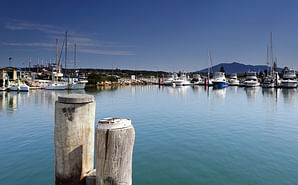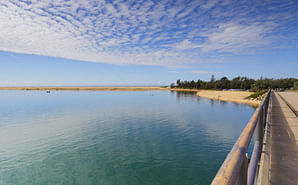Coastal Biodiversity - Saltmarsh
Saltmarshes are also vital components of the estuarine food chain, providing a home for numerous invertebrate animals such as crabs, insects, spiders, worms and small shellfish which are a vital source of food for young fish and other marine life.
Coastal Saltmarshes tend to occupy a narrow strip on flatter parts of coastal lake and estuary margins, and in depressions on the lowest parts of floodplains.
While saltmarsh is generally thought of as being vegetation which is subject to tidal influences, it also occurs in other saline or brackish situations subject to fluctuating water levels, such as around the edges of the intermittently opening coastal lakes. In tidal estuaries it is often sandwiched between mangroves and Swamp Oak Floodplain Forest (another EEC). Occurrences of Coastal Saltmarsh may vary over time.
As water level varies in intermittently closed lakes, saltmarsh may be completely immersed for lengthy periods and emerge intact when the water level recedes, or it may be damaged by immersion in water of low salinity and take some time to recover. Such changes may accelerate in the future as a result of sea level change and increased drought frequency associated with global warming.
Saltmarsh often appears devoid of obvious animal life, but it can provide an important high tide roosting area for wading birds which feed on mudflats at low tides.
Saltmarshes are also vital components of the estuarine food chain, providing a home for numerous invertebrate animals such as crabs, insects, spiders, worms and small shellfish which are a vital source of food for young fish and other marine life.
Learn more….
- NSW Department of Primary Industries, Prime Fact Sheet – Saltmarsh (pdf)
- Under the Boardwalk, Plants of the Merimbula Lake Saltmarsh (pdf)
- NSW Coastal Saltmarsh Endangered Species Listing






Was this helpful?